This is an empowered parad ritual complete with (18 Samkaras or Asht-Sanskar or ASHTADASA SAMSKARAS, the 18 special procedures of purification) item for puja and empowering dew and small amounts of water for alchemical work, ritual and health. Many types of ritual shankam exist for various rites and puja, with the parad conch being primarily a Tantrik item for alchemical and Tantrik ritual and remedies. It has a unique shape of parad and natural affinity to water, it can be used to collect the nitre-rich dew and thunderstorm waters and let them wick across its vortex shape and collecting in the vulva like opening. Tiny micro-doses of medicines can be empowered by placing in this small area. The water from the Conch Shell removes the sin and treats several diseases. It also gives liberation (Moksha) from the eternal cycle of re-birth. Parad products are also beneficial in Ayurveda treatment. The word “shankham” comes from the two Sanskrit words “Shum” which means ‘something good’ and the “Kham” meaning ‘water.’ Hence the meaning of “Shankam” is “The conch holding the sacred water”. The Shanka or conch shell is one of the most important and iconic ritual objects and symbolism of Hinduism, Buddhism and Tantra. Historically it is from the shape of the sea snail Turbinella yrum of the Indian ocean, showing how the vast primordial ocean spirals into individuated consciousness.
Installment ceremony (Pran Prathistha) is not necessary in Parad Shankh. Worshiping Parad Conch Shell also brings peace among couples. At home, it attracts wealth, prosperity, harmony, and happiness. It is also believed that the combination of Parad (Padrasam) and Shakha keeps you away from negative energies and saves you from sufferings. This is a rare item of highly empowered aura by Siddha Tantrik Doctors. Parad conch should be placed in temple/pooja ghar/office/cash box/any holy place on a red colored cloth. In the morning one should fill a little water in it, one or two tulsi leaves, one or two beads of raw rice, flower etc in it. After pooja (as you regularly do) sprinkle this water in every corner of your home/office, it will bring the flow of positive energy, prosperity as well as good luck too. Parad in itself is the most holy & auspicious metal. Comes with beautiful handmade small sadhu style patchwork bag for protection and carrying with you.
The sacred conch is associated with Vishnu, as well as the fertility goddess and Nagas. It has the shape of the vulva, making it a highly symbolic part of Tantric rites, and it is also a protective amulet as well as offering to the female deities. The Shakam is vital in the very origins of the Vedic cosmology, with some specimens producing sounds used in puja and related rituals. The ancients recorded that the demon Shankhaasura defeated the devas, and the Vedas went to the bottom of the ocean. The devas appealed to Lord Vishnu for help. He incarnated as Matsya Avataara – the “fish incarnation” – and killed Shankhaasura. The Lord blew the conch-shaped bone of his ear and head and the sonic creative divine Om sound emanated, from which emerged the Vedas. It is thus the most auspicious object that emerged during the churning of the ocean (Ksheera Sagara Samudra Manthan). It is said that, “All knowledge enshrined in the Vedas is an elaboration of Om. The conch therefore is known as shankha after Shankaasua. The conch blown by the Lord is called Paanchajanya. He carries it at all times in one of His four hands. It represents dharma or righteousness that is one of the four goals (purushaarthas) of life. The sound of the conch is thus also the victory call of good over evil.” Divine Shankh is also one of the auspicious nine objects of Lord Kubera who is the God of treasure and wealth. It is believed that the blessings of Mata Lakshmi reside permanently in Conches.
The Tantrik uses of the the Parad Shankam are for attracting wealth and overcoming obstacles while protecting against calamities and black magick. There are many Gods associated with shankam, primarily Brahma on his seat (shankhapitha or shankhadhara), Surya in the middle and Chandra at the tip. On the right side are seated Aditya, varuna, Soma, Vayu and Agni. Shankha is presided over by the twin gods Sun and Moon, and Varuna is its deity; at the back of the conch-shell is Prajapati, and in front the river goddesses Ganga and Sarasvati. So even to look at a conch-shell, or to touch it, would mean eradication of sins, like darkness disappearing on sunrise. The shankha is one of the four attributes that Vishnu holds in his hands. Hence the Shankha should be worshiped. According to Tantric belief, the shankha keeps away evil spirits and saves one from calamities.*
Shankha pooja is a must in the Vedic poojas.
“Panchajanyaya vidmahe padma garbhaya dheemahi tanno Shankha
prachodayaat” is the Vedic Gayatri mantra of Shankha.
Om Amburajaya Nama
Om Kamburajaya Namah
Om Dhavalaya Namah
Om Panchajanyaya Namah
Om Padmagarbhaya Namah
These are the five names with which the Shankha is worshipped in the
Vedic pooja.
The Shanka verse recited in pooja is:
“Shankham chandrakadaivatwam kukshouvaruna daivatam
prusthe prajapatirdaiva mugre ganga saraswati
Pruthivyam yani teerthani vasudevasyachagyaya
Shankhe tisthanti viprendra tasmat shankham prapoojyayet”
Several deities recide in its different parts: in the front end the
moon, in the hollow sides Varuna, at the back Prajapati and in the
lip the rivers Ganga and Sarasvati. The shankha is one of the four
attributes that Vishnu holds in his hands. Hence the Shankha should
be worshiped.
According to Tantric belief, the shankha keeps away
evil spirits and saves one from calamities.
“Shankham” comes from “Shum” which means something good and
the “Kham” meaning water. Hence the meaning of “Shankam” is “The
conch holding the sacred water”.
“Shankha Madyesthitam Thoyam Brahma Hatyadhikam Daheth
Anga Lagnam Manushyanam Mruthyu Samsara Bheshajam”
The water from the Shankha purifies the sinner and can cure all the
ailments which cannot be cured by the other medicines. It is a cure
for the physical ailments in humans, from the the fear of death and
gives liberation from the eternal cycle of birth and death. Shankha
powder is used in several Ayurvedic medicines.
According to the Vedic scriptures, the Shankha is one of the most
auspicious objects that emerged from the sea during the Ksheera
Sagara samudra manthan.
Hence it is regarded as the brother of Goddess Lakshmi, the ruler of wealth.
Most of the Gods and Goddesses hold the Shankha in their hands. Shankh is one
auspicious nine objects – Navanidhi – of Kubera who is the Lord of wealth.
Blowing the Shankha is regarded as an auspicious sound at the start or end of
any cerimony.
Shanka verse recited in pooja is:
“Shankham chandrakadaivatwam kukshouvaruna daivatam
prusthe prajapatirdaiva mugre ganga saraswati
Pruthivyam yani teerthani vasudevasyachagyaya
Shankhe tisthanti viprendra tasmat shankham prapoojyayet”
Tantric mantra “Shankha Madyesthitam Thoyam Brahma Hatyadhikam Daheth
Anga Lagnam Manushyanam Mruthyu Samsara Bheshajam”
*All the above statements have not been evaluated by the Food and Drug administration. This product is not intended to diagnose, treat, cure, or prevent any disease.
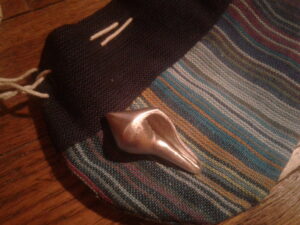
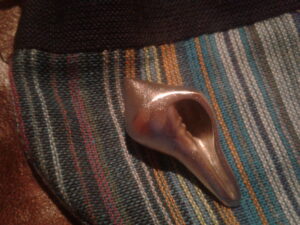
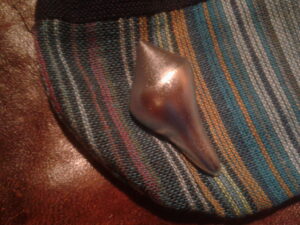
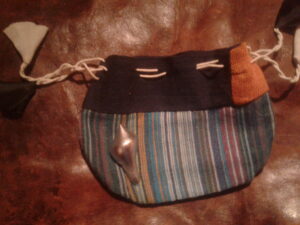
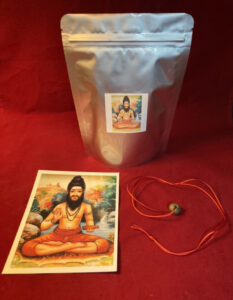
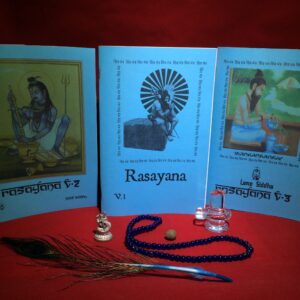
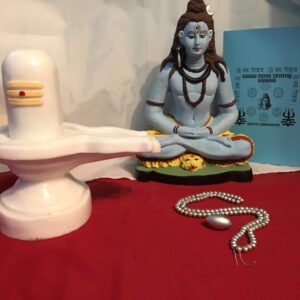
 Adding...
Adding...